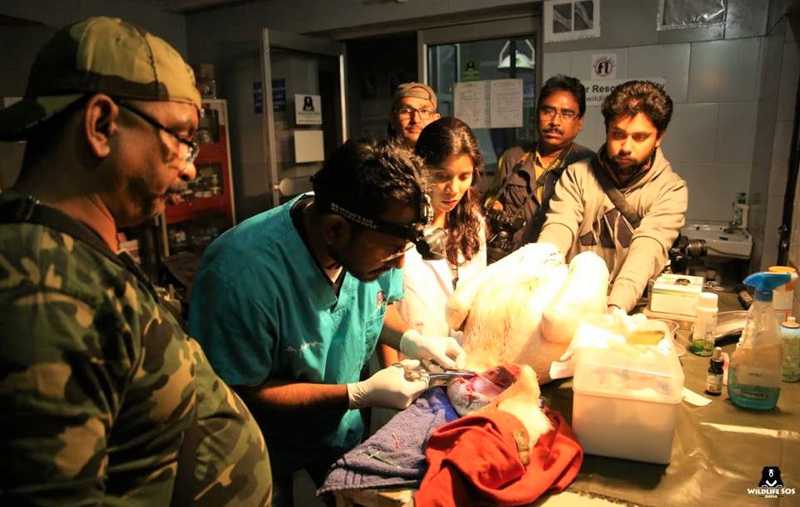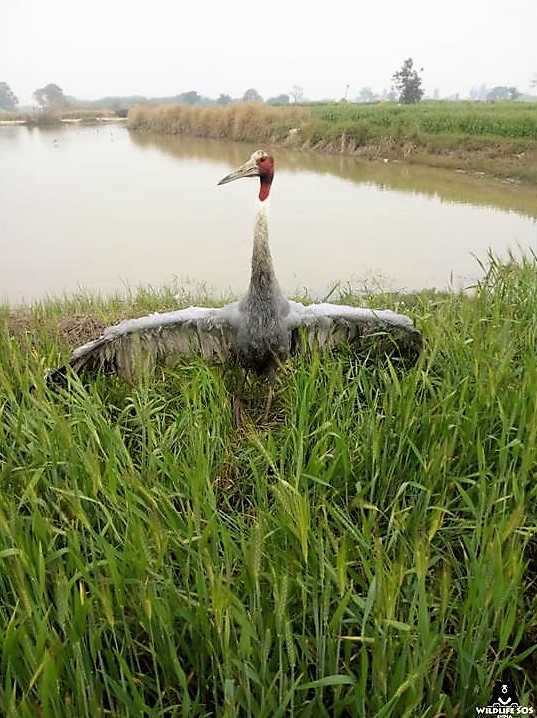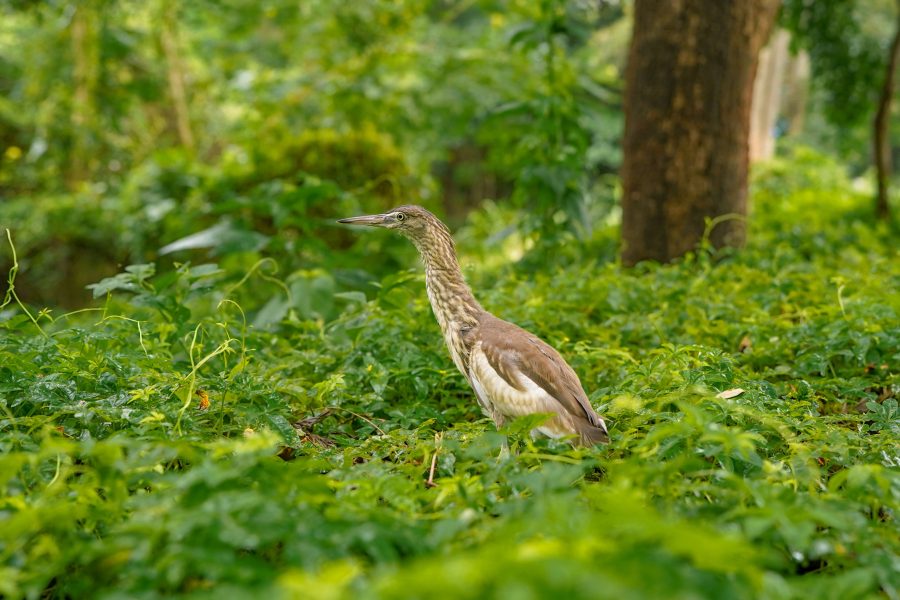Home to over 165 species of migratory and resident birds, the Soor Sarovar Bird Sanctuary comprises of the fresh water wetland, popularly known as the Keetham Lake. Surrounded by dense and luxuriant vegetation, it offers a rare and picturesque sight and has a thriving avifauna. The Soor Sarovar Bird Sanctuary is under the vigilance of the Forest Department of the state of Uttar Pradesh. Earlier this week, a routine patrolling by Forest officers resulted in their stumbling upon a distressed bird near the lake. After multiple attempts, the team was finally able to catch the bird and immediately transported it to the Agra Bear Rescue Facility for immediate medical intervention.
The large bird, identified as a Great White Pelican had swallowed a fairly large-sized fish only to end up choking on its meal! Sustaining multiple internal tears and ruptures in the oesophagus (food pipe) and neck region, the bird had to undergo emergency surgery. The wounds were cleaned, following which the ruptures were surgically sutured by our Deputy Director Veterinary Service, Dr. Ilayaraja. The pelican is currently receiving therapeutic laser treatment to reduce inflammation, along with post-operative medication.
 Great White Pelican undergoing surgery
Great White Pelican undergoing surgery
The Great White Pelican (Pelecanus onocrotalus) also commonly known as the Rosy Pelican, belongs to the family Pelecanidae. It is prevalent across freshwater wetlands of the Indian sub-continent. They are some of the heaviest flying birds and have a massive wingspan that can range from 7.4 foot to 12 foot. Their diet mainly consists of fish and also feed on small birds, frogs and crustaceans. Although classified as “Least-Concern” on the IUCN Red List, factors such as human encroachment, loss of foraging habitat and breeding sites, along with pollution are all contributing to the decline of the Great White Pelican population in the wild.
The pelican is showing positive signs of recovery and fish is gradually being incorporated in its diet. The bird will be released back into its natural habitat once affirmed fit by the veterinary team.
We are extremely grateful to the Forest Department for the quick series of action, which helped in saving the helpless bird’s life. We appreciate the responsibility they conferred on us in this specific case and numerous cases in the past. Wildlife SOS and the Forest Department have collectively carried out joint operations in the past in rescuing wild animals in distress.
Along similar lines, Wildlife SOS’ Rapid Response Unit rushed to the Veterinary Hospital in Fatehpur Sikri, to medically aid an injured Sarus Crane. The crane was rescued by the local villagers, who spotted it in an adjoining farmland. Under the supervision of the Forest Department, the struggling bird was transported to the hospital to avail the first aid.
 Injured Sarus Crane spotted in a farmland
Injured Sarus Crane spotted in a farmland
On arrival, the crane was found with a fractured left limb, which restricted its movement, leaving it struggling to move or fly. The Sarus crane (Grus antigone) is the tallest flying bird in the world standing 152-156 cm tall with a wingspan of 240cm. This species is under severe threat due to loss of natural wetlands which form crucial breeding and foraging habitats. They are classified as ‘Vulnerable’ on the IUCN Red List. The bird was also rendered medical treatment and is currently under observation at the care of Wildlife SOS.




